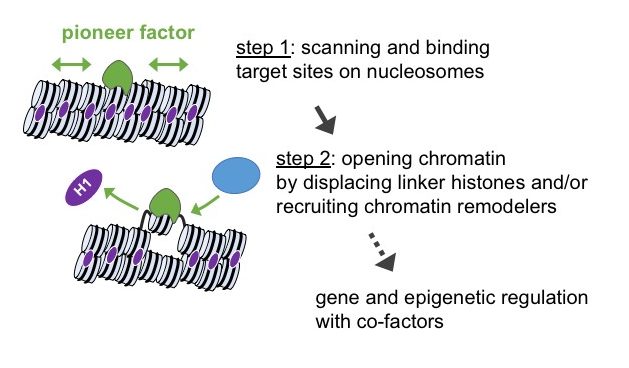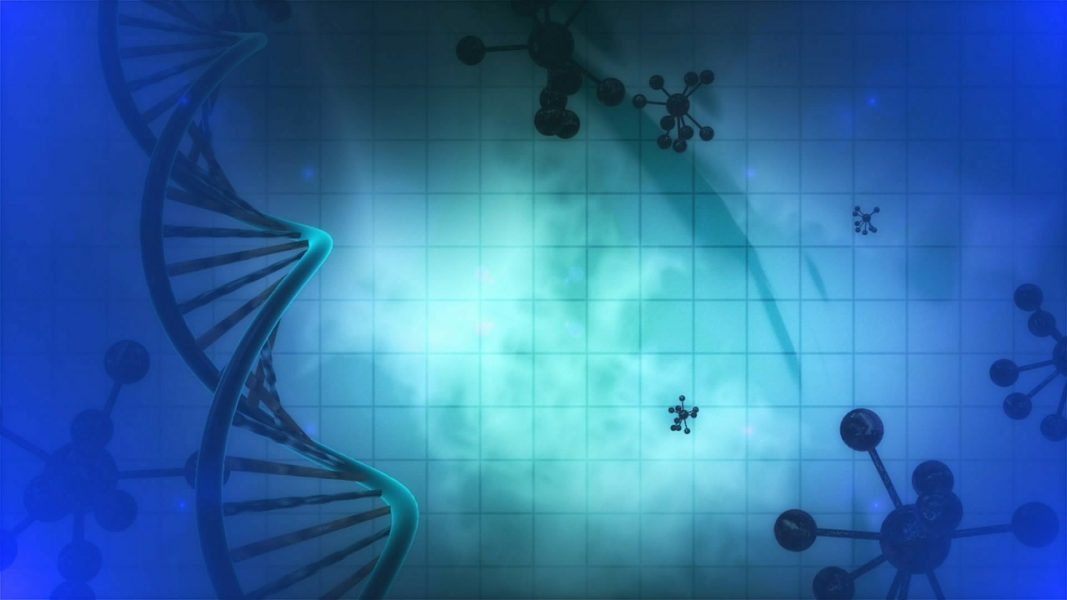Embryonic development starts with just one cell, a fertilized egg. This single cell divides many times. The resulting cells become increasingly specialized and ultimately differentiates into many different types of cells in the body. Although most differentiated cells contain the same genetic material, each type has a distinct appearance and function. If the genetic material is the same, then what makes liver cells different from muscle or nerve cells?
The answer lies in what genes are turned on or off and when. In liver cells, liver-specific genes are turned on and non-liver-specific genes are turned off. In other cells, like muscle and nerves, a different set of genes is turned on, genes specific to other cell types are turned off, and the timing of gene expression is different. In WIREs Systems Biology and Medicine, Makiko Iwafuchi-Doi describes how pioneer factors, a special class of transcription factors, regulate the differential gene expression. 
Gene regulation occurs in the context of chromatin, where the DNA is wrapped around groups of proteins called histones. Chromatin has distinct regions with different structures: an open structure represents an active or poised state ready for genes to be expressed, and a closed structure represents a silent or repressed state that keeps genes turned off. Cells with the same genetic material can have distinct chromatin landscapes. Based on their specific chromatin landscape, cells change their interpretation of inductive signals that control cell specification and produce distinct responses. In their review in WIREs, Iwafuchi-Doi tackles the question of how pioneer factors interact with closed chromatin to influence chromatin landscapes and generate differentiated cells.
Transcription factors bind to a specific DNA motif to regulate whether the target gene is “on” or “off.” To differentiate, cells need to turn on the genes specific for their fate. Early in embryonic development, these genes may be in chromatin with a closed structure, making them inaccessible to most transcription factors. Pioneer factors are a unique class of transcription factors that have the remarkable ability to target closed chromatin. Often, binding of a pioneer factor leads to the local opening of chromatin and the initiation of gene regulation by other transcription factors and chromatin-modifying enzymes.
As more transcription factors have been identified as pioneer factors, roles beyond embryonic development have been revealed. These include cellular reprogramming of adult somatic cells and tumorigenesis. In the article, the author describes the mechanisms that let transcription factors function as pioneer factors and highlight how understanding these mechanisms will enhance our ability to precisely control cell fate to advance basic research and for therapeutic purposes.
Kindly contributed by the Author.

















